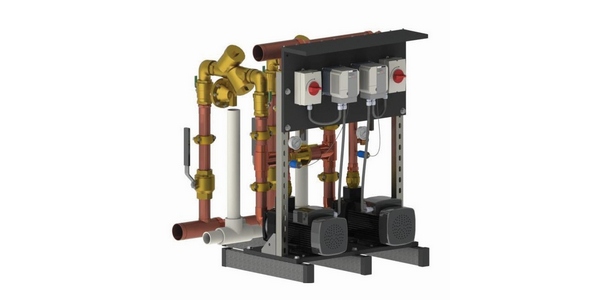Revised Lead and Copper Rule Remains Top PMI Priority
Association views changes requiring nationwide lead pipe replacement as vital step forward

By Kerry Stackpole
The Biden-Harris Administration recently issued new improvements to the Lead and Copper Rule requiring drinking water systems nationwide to identify and replace lead pipes within 10 years. Plumbing Manufacturers International sees the Environmental Protection Agency’s long-awaited revisions to the Lead and Copper Rule as a major step forward.
As the first major overhaul of federal protections for lead in drinking water in more than two decades, the revised rule requires more rigorous drinking water testing and a lower threshold for communities to act on lead in drinking water. The rule also strengthens public education and consumer awareness, requirements for small systems, and sampling in schools and childcare facilities.
PMI has supported EPA’s efforts to revise the rule to upgrade aging water infrastructure and establish strong protections to reduce lead contamination in drinking water. The EPA estimates that up to 9 million homes — many located in lower-income communities — receive water through legacy lead pipes nationally.
Getting the lead out
PMI has advocated for reducing lead in drinking water in many ways. A top priority was to see the replacement of all lead service lines across the country — because those pipes are the root cause of most lead in water systems, according to EPA and other studies.
PMI members continue to find ways to develop products with little or low lead content in compliance with the Reduction of Lead in Drinking Water Act, replacing lead with brass alloys, other metals, ceramics and plastics.
The recent Lead and Copper Rule modifications (https://www.epa.gov/ground-water-and-drinking-water/lead-and-copper-rule-improvements) require water systems to ensure lead concentrations do not exceed an “action level” of 10 parts per billion, down from 15 ppb under the current standard. If high lead levels are found, water systems must inform communities about ways to protect public health, including using water filters and taking steps to reduce lead exposure while simultaneously working to replace all lead pipes.
Communities begin using federal funding
The Bipartisan Infrastructure Law passed in 2021 has delivered $50 billion to the EPA to upgrade the country’s drinking water and wastewater infrastructure, the EPA reported. The funding covers $15 billion over five years dedicated to lead service line replacement and $11.7 billion of general Drinking Water State Revolving Funds that can be used for lead service line replacement. These investments also will support the plumbing industry by creating good jobs in local communities.
Cities across the country have begun using federal funding to replace lead pipes to meet the 10-year goal. For example, the Detroit Water and Sewerage Department in Michigan has received $90 million, allowing the city to accelerate its lead service line replacement program with plans to replace more than 8,000 lead service lines this year, according to Underground Infrastructure. Denver Water in Colorado has said it received $76 million and plans to replace up to 7,600 lead service lines.
PMI will continue to work with and educate policymakers about crucial issues that affect our nation’s precious drinking water, such as lead contamination, and advocate for systemic solutions. The new rule improvements have taken time to cultivate and are a testament to the tenacity of the industry to ensure water systems remain safe for schools, communities and generations to come.
Kerry Stackpole, FASAE, CAE, is the CEO/executive director of Plumbing Manufacturers International.
Image by Freepik


